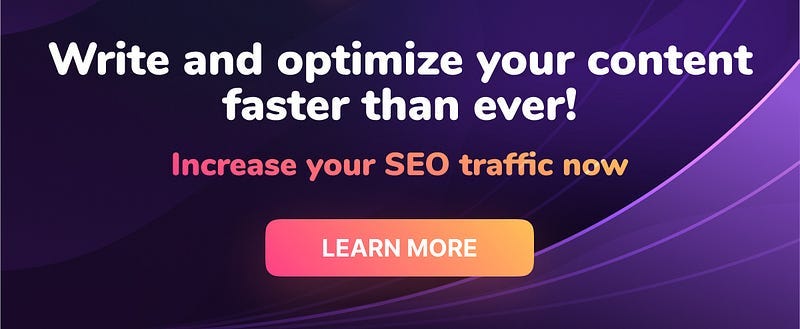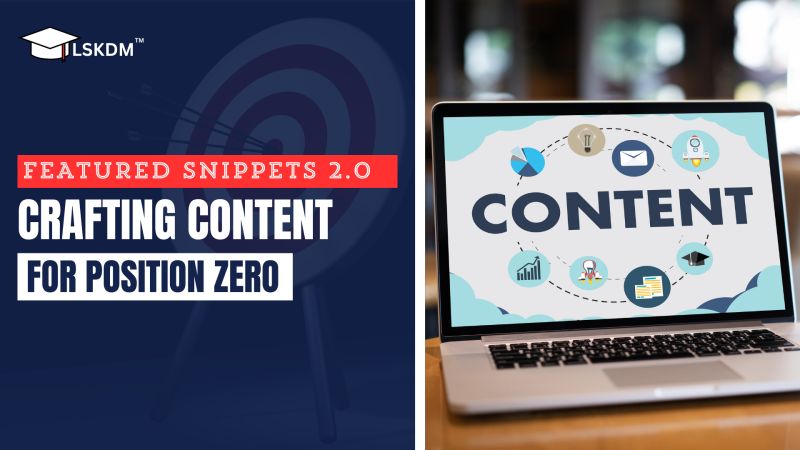In the realm of digital marketing, understanding user intent is crucial for creating content that effectively addresses the needs and desires of your target audience. By deciphering the motivations behind a user’s search query, marketers can tailor their content to better resonate with potential customers, ultimately driving higher engagement and conversion rates. This article explores the importance of user intent in content creation, and provides strategies for identifying and leveraging it to enhance the effectiveness of your marketing efforts.
Importance of Understanding User Intent
-
Relevance: By understanding user intent, content creators can tailor their content to meet the specific needs and desires of their audience. This ensures that the content remains relevant and valuable to the users, increasing engagement and satisfaction.
-
Higher Click-Through Rates: When content aligns with user intent, it is more likely to attract clicks from users who are actively seeking that information. This can lead to higher click-through rates, increasing traffic to the website or platform.
-
Better User Experience: Creating content that fulfills user intent helps in providing a better user experience. Users are more likely to find what they are looking for quickly and easily, leading to increased satisfaction and repeat visits.
-
Improved SEO Performance: Search engines like Google prioritize user intent when ranking search results. By creating content that matches user intent, content creators can improve their chances of ranking higher in search engine results pages, ultimately driving more organic traffic to their website.
-
Enhanced Engagement and Conversion: Understanding user intent enables content creators to create more targeted and personalized content. This leads to higher engagement levels as users are more likely to interact with content that speaks directly to their needs and interests. Additionally, by aligning content with user intent, creators can increase the likelihood of conversion as users are more likely to take desired actions.
-
Competitive Advantage: In today’s digital landscape, where competition for user attention is fierce, understanding user intent can provide a competitive edge. By consistently delivering content that meets user needs, content creators can differentiate themselves in the market and build a loyal audience base.
-
Data-Driven Decision Making: By analyzing user intent data, content creators can gain valuable insights into user preferences, behavior, and trends. This data-driven approach helps in making informed decisions regarding content creation strategies, ensuring that resources are allocated effectively to meet user demand.
Understanding user intent is essential in the process of creating high-quality, impactful content that resonates with the target audience and drives meaningful results. By focusing on user needs and intentions, content creators can optimize their content strategy, improve user engagement, and ultimately achieve their business objectives.
What is User Intent?
User intent refers to the specific goal or purpose a user has when conducting a search query online. Understanding user intent is crucial for creating content that effectively meets the needs and expectations of your target audience. By deciphering what users are looking for when they enter certain keywords or phrases into search engines, content creators can tailor their content to provide valuable and relevant information that aligns with the user’s needs.
There are generally four main types of user intent that content creators should consider when developing content:
-
Informational intent: Users with informational intent are seeking specific information or answers to their questions. They may be looking for definitions, how-to guides, or general knowledge on a particular topic.
-
Navigational intent: Users with navigational intent are looking to find a specific website or webpage. They may already know the website they want to visit but are using search engines to find it quickly.
-
Transactional intent: Users with transactional intent are ready to make a purchase or take a specific action. They may be looking for product reviews, pricing information, or online stores where they can make a purchase.
-
Commercial investigation intent: Users with commercial investigation intent are in the research phase of the buying process. They are comparing different products, reading reviews, and evaluating their options before making a decision.
To better understand user intent, content creators can utilize various tools and resources, such as:
- Keyword research tools: Tools like Google Keyword Planner, SEMrush, or Ahrefs can provide insights into what keywords users are searching for and help identify user intent.
- Analytical data: Analyzing user behavior, search queries, and engagement metrics on your website can give you valuable insights into user intent.
- Search engine results pages (SERPs): Examining the top-ranking pages for certain keywords can help you understand what type of content is currently meeting users’ intent for those queries.
By recognizing and catering to user intent in content creation, you can improve your website’s visibility on search engines, attract the right audience, and enhance user experience on your website.
Types of User Intent (Informational, Navigational, Transactional)
Informational Intent
- Description: Users with informational intent are seeking knowledge or answers to specific questions.
- Content Creation Strategy: Focus on creating high-quality, informative content that answers common questions or provides valuable insights for your target audience.
- Examples: "How-to" guides, informational articles, tutorials, etc.
- Keywords to Target: "what is," "how to," "benefits of," etc.
Navigational Intent
- Description: Users with navigational intent have a specific website or page in mind that they want to reach.
- Content Creation Strategy: Ensure your website is easily navigable and optimize for brand-related keywords.
- Examples: Brand-specific searches, website URLs, social media profiles, etc.
- Keywords to Target: Brand names, product names, website URLs.
Transactional Intent
- Description: Users with transactional intent are looking to make a purchase or engage with a brand in a meaningful way.
- Content Creation Strategy: Create content that highlights the benefits of your products or services and include clear calls-to-action for conversions.
- Examples: Product pages, pricing information, registration forms, etc.
- Keywords to Target: "buy now," "discount," "free trial," etc.
Understanding these different types of user intent is crucial for creating valuable and engaging content that resonates with your target audience. By aligning your content strategy with user intent, you can attract more relevant traffic, increase conversions, and build stronger relationships with your audience. Remember to continually analyze user behavior and adjust your content strategy accordingly to meet the evolving needs and preferences of your users.
How to Identify User Intent
To effectively identify user intent, follow these steps:
-
Keyword Research: Start by conducting keyword research to understand what users are searching for. Look for keywords that are relevant to your content and identify any patterns in search queries.
-
Analyze Search Results: Examine the search results for your target keywords. Consider the types of content that are ranking highly and the intent behind those results. This can provide valuable insights into what users are looking for.
-
Use Google’s Autocomplete Feature: Utilize Google’s autocomplete feature by typing your target keywords into the search bar. The suggested search queries that appear can give you an idea of common user intents related to those keywords.
-
Review Related Searches: Scroll to the bottom of the search results page to find related searches. This can help you identify additional user intents and topics that are related to your content.
-
Understand Long-Tail Keywords: Long-tail keywords often indicate specific user intents. Pay attention to these keywords in your research to better understand the needs and preferences of your target audience.
-
Create User Personas: Develop user personas based on your target audience’s demographics, interests, and behaviors. This can help you tailor your content to meet the specific needs and intents of different user groups.
-
Monitor Website Analytics: Use tools like Google Analytics to track user behavior on your website. Analyze metrics such as bounce rate, time on page, and conversion rate to gain insights into user intent and optimize your content accordingly.
-
Engage with Your Audience: Interact with your audience through surveys, social media, and comments sections. Ask them about their preferences, challenges, and goals to better understand their intent and create content that resonates with them.
By following these steps and leveraging various tools and strategies, you can effectively identify user intent and create content that aligns with the needs and interests of your target audience.
Tools for Analyzing User Intent
There are various tools available for analyzing user intent to help content creators understand their audience better and create more relevant content. Some popular tools include:
-
Google Analytics: Google Analytics is a powerful tool that provides valuable insights into user behavior on your website. By analyzing metrics such as bounce rate, session duration, and pageviews, content creators can gain a better understanding of user intent.
-
Google Search Console: Google Search Console allows website owners to see which keywords are driving traffic to their site. By analyzing the search queries that lead users to their content, creators can uncover valuable insights into user intent.
-
Keyword Research Tools: Tools like SEMrush, Ahrefs, and Moz Keyword Explorer can help content creators identify relevant keywords that reveal user intent. By targeting keywords that align with user intent, creators can increase the relevance of their content.
-
Heatmap Tools: Heatmap tools like Hotjar and Crazy Egg provide visual representations of user behavior on a website. By analyzing heatmaps, content creators can see where users are clicking, scrolling, and spending the most time, helping them understand user intent better.
-
Social Media Insights: Platforms like Facebook, Twitter, and Instagram offer insights into audience demographics, interests, and engagement metrics. By analyzing these insights, content creators can tailor their content to better align with user intent on social media.
-
User Surveys and Feedback: Direct feedback from users can provide valuable insights into their preferences and intentions. Tools like SurveyMonkey and Google Forms can help creators gather feedback from their audience to better understand user intent.
-
Competitor Analysis Tools: Tools like BuzzSumo and SimilarWeb can provide insights into what content is performing well for competitors and what user intent is driving that success. By analyzing competitors’ strategies, content creators can adapt their own content to better meet user intent.
By leveraging these tools for analyzing user intent, content creators can gain valuable insights into their audience’s preferences, behaviors, and intentions. This understanding allows creators to craft more relevant and engaging content that resonates with users and drives better results.
Utilizing User Intent in Content Creation
User intent is a crucial factor in content creation as it directly influences the success and relevance of the content to the target audience. By understanding the intent behind a user’s search query, content creators can tailor their material to meet the specific needs and expectations of their audience. Utilizing user intent in content creation involves the following strategies:
-
Keyword Research: Conducting thorough keyword research is essential to uncovering the intent behind user search queries. By identifying the keywords that users are using to find relevant content, content creators can gain insights into the topics, questions, and solutions that are of interest to their target audience.
-
Create Targeted Content: Once the user intent has been established through keyword research, content creators can develop targeted content that directly addresses the needs and concerns of their audience. By focusing on creating content that aligns with user intent, creators can increase the likelihood of their material being discovered and consumed by the intended audience.
-
Provide Value: To effectively utilize user intent in content creation, it is essential to prioritize providing value to the audience. Whether it’s through solving a problem, answering a question, or providing valuable information, content should always aim to meet the user’s needs and expectations.
-
Optimize for Search Engines: Tailoring content to match user intent not only benefits the audience but also helps with search engine optimization (SEO). By creating content that aligns with user intent, content creators can improve their visibility in search engine results and increase organic traffic to their websites.
-
Monitor and Adapt: User intent can evolve over time, so it is essential to continuously monitor and adapt content strategies to meet changing audience needs. By analyzing user behavior, feedback, and trends, content creators can refine their content creation process to better align with user intent.
By utilizing user intent in content creation, creators can improve the relevance, engagement, and effectiveness of their content, ultimately leading to a more successful and impactful content strategy.
Tips for Creating Content Based on User Intent
-
Understand the Different Types of User Intent
- Familiarize yourself with the different types of user intent such as informational, navigational, transactional, and commercial investigation. This will help you create content that aligns with what the user is looking for.
-
Conduct Keyword Research
- Utilize tools like Google Keyword Planner, SEMrush, or Ahrefs to discover the keywords that users are using to search for information related to your topic. This will help you optimize your content to match user intent.
-
Analyze Search Engine Results Pages (SERPs)
- Take a close look at the search engine results pages for your target keywords. Analyze the type of content that is ranking well and try to understand why it is performing well. This will give you insights into what users are looking for.
-
Create Comprehensive Content
- Develop content that thoroughly covers the topic and provides value to the user. Include relevant information, images, videos, and other multimedia elements to enhance the user experience.
-
Optimize for Featured Snippets
- Structure your content in a way that is likely to be selected as a featured snippet by search engines like Google. This can increase visibility and drive more traffic to your website.
-
Focus on User Experience
- Ensure that your content is easy to read, navigate, and understand. Use clear headings, subheadings, and bullet points to organize the information effectively.
-
Monitor and Analyze Performance
- Keep track of how your content is performing in terms of traffic, engagement, and conversions. Use tools like Google Analytics to gather insights and make adjustments as needed.
-
Stay Up to Date with Trends
- Stay informed about the latest trends and changes in user behavior. This will help you create content that is relevant and appealing to your target audience.
By following these tips and understanding user intent, you can create content that resonates with your audience and drives meaningful results for your business.
Measuring Success and Adjusting Content Based on User Intent
After creating content based on understanding user intent, it is crucial to measure the success of your efforts and adjust the content accordingly. By analyzing metrics and feedback, you can ensure that your content aligns well with user intent and continues to meet their needs effectively. Here are some key steps to consider:
-
Utilize Analytics Tools: Track key metrics such as page views, bounce rates, time on page, and conversion rates to understand how users are interacting with your content. Tools like Google Analytics can provide valuable insights into user behavior.
-
Monitor Feedback: Pay attention to user comments, reviews, and social media engagements to gauge user sentiment towards your content. This feedback can provide valuable information on whether your content is resonating with users or needs adjustments.
-
Understand User Pathways: Analyze user pathways through your website to see how users are navigating to find relevant content. This can help identify any friction points or gaps in content that need to be addressed.
-
Optimize for SEO: Continuously optimize your content for search engines to ensure it is being discovered by users with relevant intent. Use keywords and analyze search trends to adjust your content strategy accordingly.
-
A/B Testing: Experiment with different content formats, layouts, or messaging to test what resonates best with your target audience. A/B testing can help refine your content to better align with user intent.
-
Iterate and Improve: Based on the insights gathered from analytics, feedback, and testing, make iterative improvements to your content. Continuously refine and optimize your content to ensure it remains relevant and valuable to users.
By consistently measuring the success of your content and adjusting it based on user intent, you can create a more engaging and effective content strategy that meets the needs of your audience. This iterative process of improvement is essential in the ever-evolving landscape of digital marketing.
Conclusion
In conclusion, understanding user intent is crucial for creating effective and engaging content that serves the needs of your audience. By identifying the different types of user intent – informational, navigational, and transactional – and utilizing tools for analyzing user intent, content creators can tailor their content to meet the expectations of their users. Furthermore, by measuring success and adjusting content based on user intent, creators can ensure that their content remains relevant and valuable to their audience. By following these tips and strategies, content creators can improve the quality of their content and ultimately drive more traffic and engagement to their websites.
If you want to improve your content creation strategy, understanding user intent is crucial. By knowing what your audience is looking for, you can tailor your content to meet their needs and provide valuable information.
For tips and insights on how to effectively understand user intent and create engaging content, visit https://DeltaWriter.com. Their resources can help you optimize your content strategy and reach your target audience more effectively. Start creating content that resonates with your audience today!

Director @Anyalpha, a Top Software Development Company offering Mobile App Development and Website Development Services to Businesses & Startups.



